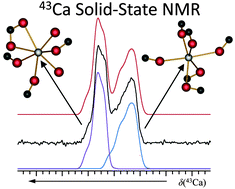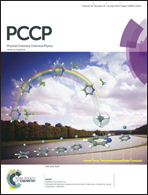Calcium-43 chemical shift and electric field gradient tensor interplay: a sensitive probe of structure, polymorphism, and hydration†
Abstract
Calcium is the 5th most abundant element on earth, and is found in numerous biological tissues, proteins, materials, and increasingly in catalysts. However, due to a number of unfavourable nuclear properties, such as a low magnetogyric ratio, very low natural abundance, and its nuclear electric quadrupole moment, development of solid-state 43Ca NMR has been constrained relative to similar nuclides. In this study, 12 commonly-available calcium compounds are analyzed via43Ca solid-state NMR and the information which may be obtained by the measurement of both the 43Ca electric field gradient (EFG) and chemical shift tensors (the latter of which are extremely rare with only a handful of literature examples) is discussed. Combined with density functional theory (DFT) computations, this ‘tensor interplay’ is, for the first time for 43Ca, illustrated to be diagnostic in distinguishing polymorphs (e.g., calcium formate), and the degree of hydration (e.g., CaCl2·2H2O and calcium tartrate tetrahydrate). For Ca(OH)2, we outline the first example of 1H to 43Ca cross-polarization on a sample at natural abundance in 43Ca. Using prior knowledge of the relationship between the isotropic calcium chemical shift and the calcium quadrupolar coupling constant (CQ) with coordination number, we postulate the coordination number in a sample of calcium levulinate dihydrate, which does not have a known crystal structure. Natural samples of CaCO3 (aragonite polymorph) are used to show that the synthetic structure is present in nature. Gauge-including projector augmented-wave (GIPAW) DFT computations using accepted crystal structures for many of these systems generally result in calculated NMR tensor parameters which are in very good agreement with the experimental observations. This combination of 43Ca NMR measurements with GIPAW DFT ultimately allows us to establish clear correlations between various solid-state 43Ca NMR observables and selected structural parameters, such as unit cell dimensions and average Ca–O bond distances.


 Please wait while we load your content...
Please wait while we load your content...